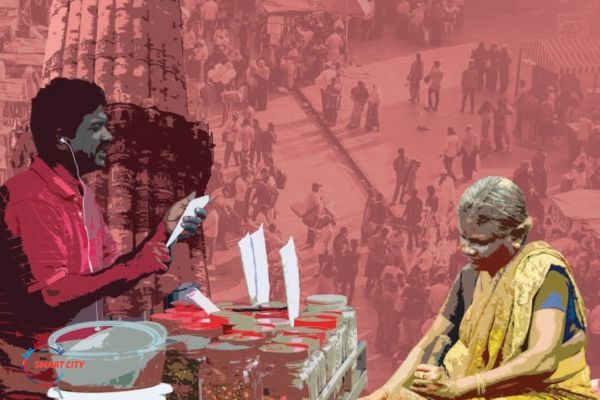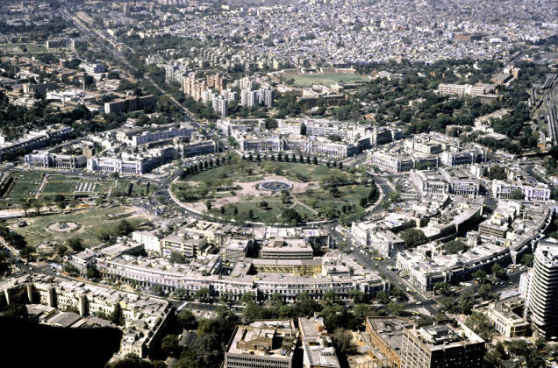
Exploring the Essence of ‘Local’
Culture has historically united communities, serving as a medium of expression and shaping shared identity. Epistemology, the study of knowledge acquisition, is fundamental in defining local culture. Epistemology and culture influence each other, impacting knowledge systems, intergenerational knowledge exchange, and community empowerment, thus contributing to identity formation.
While embedded culture defines the identity of a place, it is also essential to acknowledge that identities are dynamic and ever-evolving. Some, like Banaras and Florence, are culturally rooted, defining local economies. Others, like Bengaluru and Seattle, derive their identity from economic activities. Hence, understanding the unique cultural essence of each place is vital. Yet, transformations are inevitable; some extend cultural elements, while others introduce new ones. It is critical to understand that culture is both a driver and an enabler of development. It fosters local economic activities and empowers communities. Besides, local actions are pivotal for improving lives and livelihoods.
But then, what is the advantage of championing local culture and economy? The need stems from the understanding that industrialization coupled with globalization has led to the homogenization of cultures and the loss of local traditions, customs, and businesses. Prioritizing local experiences, products, and services enhances resilience. Hence, local knowledge systems, defining identity, offer solutions to modern challenges and must be preserved. Failure to recognize identity’s fluidity may lead to crises. Communities must balance preserving cultural heritage and embracing new growth opportunities. In a rapidly changing world, understanding and nurturing culture’s role in identity formation is essential for communities to adapt, thrive, and preserve their uniqueness.
Connecting ‘Local’ Culture and Identity to the Economy
As cultural melting pots, cities play a significant role in the interplay between culture and the economy. However, cultural and creative activities aren’t confined to urban areas; rural environments also possess rich local knowledge and skills. Acknowledging this interconnectedness is crucial for urban planning and fostering resilient, culturally rich cities.
Further, examining the intricate connection between local culture, identity, and the economy is essential. It helps us recognize how these elements interact and influence one another within a community or region. Local culture and identity have a significant impact on economic activities. The values, traditions, and practices inherent to a specific culture shape how people engage in commerce and trade. For instance, a region known for its rich craftsmanship might leverage its cultural heritage to produce and market traditional artisanal goods, which can contribute to the local economy. However, it’s essential to note that not all aspects of local identity are directly tied to economic value. For example, certain cultural rituals or art forms, like Mexican Papel Picado Banners or Indian Rangoli/Kollam, may hold immense cultural significance and serve as vital identity markers but may not translate into substantial economic gains.
Nevertheless, when communities effectively harness their cultural and creative elements, they can create distinctive products, services, or experiences that attract consumers. This concept aligns with the global trend of the creative economy, where economic activities are deeply rooted in cultural and artistic expressions. In such cases, a community’s cultural history, traditional expertise, and creative abilities become assets that drive economic growth, foster innovation, and support sustainable development. To navigate this complex landscape, clear terminology is essential. Terms like “Cultural and Creative Industries (CCI)” provide a unified framework for understanding the relationship between culture, identity, and the economy. This clarity helps researchers, policymakers, and businesses work together to harness the potential of culture and creativity to drive economic prosperity and preserve cultural heritage. Figure 1 depicts the activities that span cultural and creative sector viewpoints to capture the field’s broad extent and diversity.
Challenges and Way Forward for Fostering ‘Local’ Culture and Economy
Promoting local identity in culture and the economy is a complex task, hindered by informal systems, limited recognition, and urbanization gaps. Migration can both help and hurt local cultures and economies. Over-tourism strains cultural preservation and can lead to commercialization at the expense of authenticity. Technological advancements challenge traditional practices and intellectual property protection. Collaborative efforts and responsible tourism are essential for success. Overcoming these challenges can celebrate local identities, drive sustainable economic growth, and strengthen communities.
Also Read | Learning from local identities to transform cities
To promote CCI, policies need a holistic and inclusive approach, which would help facilitate a multiplier effect on local economies. Policy recommendations majorly include:
- Enabling Legislative Environment: Setting up an enabling legislative environment to support the CCI and local economies that the city identifies as an element of its identity.
- Strengthening Institutional Arrangement: Devising an institutional structure and setting up a dedicated unit at the city level, like the Culture Cell/ Culture Conservation Society/Centre for Culture & Heritage, responsible for promoting cultural practices.
- Devising a Regulatory Framework: Formulating regulations to mitigate environmental and occupational hazards, promote safe working conditions, and ensure individuals’ physical and mental well-being in creative activities.
- Establishing Collaborative Connections: Devising government- led Initiatives for promoting cultural and creative products, services, and experiences.
- Enabling Access to Finance: Enabling financial access (including government-led schemes/ programmes and private sector-led initiatives) to support growth and promote cultural practices and local economies.
- Strengthening Creative Capacities: Creating convergence for skill development and fostering innovations.
These recommendations aim to foster cultural growth, economic development, and inclusivity while preserving cultural heritage. They provide a comprehensive strategy to promote local identities, enrich communities, and illustrate good practices adopted worldwide, serving as a reference for cities considering policy implementation.
Conclusion
To conclude, UN Secretary-General Ban Ki-moon once emphasized the importance of culture in development, highlighting that many well-intentioned programs failed due to a lack of consideration for cultural contexts. Understanding and embracing local culture and identity are paramount to mobilizing people and achieving sustainable development. This article underscores that local culture and economy are intrinsic to local identity, rooted in community experiences, language, cuisine, and values. Organic identity development is crucial, as imposed constructs often fail to connect with people’s daily lives. Preserving cultural diversity and local economies fosters uniqueness, creativity, and frugal innovations.
This article also aims to bring forward the need and narrative of nurturing the ‘LOCAL’, particularly in light of the priorities identified in the sixth cycle of Urban 20 (U20). It lists policies that foster an enabling environment rather than proposing regulatory measures frequently antagonistic to innovation and identity. Each country must recognize and respect cultural rights and develop policies ingrained in their communities, local practices, and unique environments rather than replicating approaches from elsewhere. While on the one hand, these efforts are crucial to safeguard cultural and creative practices from being lost over time, on the other hand, they help us achieve the larger vision of economic stability.
In his notable work, “The Image of the City” (p. 119), Kevin Lynch accurately states that…
we need an environment that is not simply well-organized but poetic and symbolic. It should speak of the individuals and their complex society, their aspirations and historical tradition, the natural setting, and the complicated functions and movements of the city world. However, the clarity of structure and vividness of identity are the first steps to developing strong symbols. By appearing as a remarkable and well-knit place, the city could provide a ground for the clustering and organization of these meanings and associations. Such a sense of place enhances every human activity there and encourages the deposit of a memory trace.”





















